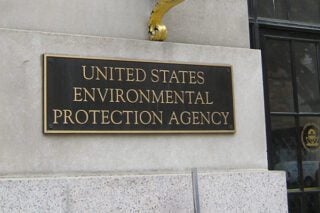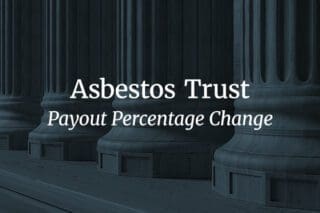
Recently, reports surfaced that a longtime school teacher from Philadelphia was diagnosed with mesothelioma. The Philadelphia Federation of Teachers is now seeking $100 million to remove asbestos and lead from all schools in the district. Though it is unclear if the teacher developed mesothelioma as a result of asbestos exposure at the schools specifically, the concern is valid.
Reports estimate that about one-third of all schools in the country still contain asbestos. As most schools were built before 1980, when the use of asbestos became more strictly regulated in the United States, the mineral may still be found in many of these buildings. Although there are laws in place to protect teachers and students from exposure, government documents have noted that not all schools have necessarily been properly following these requirements.
Asbestos Problem in Philadelphia Schools
Faculty, students and parents alike are concerned about the recent mesothelioma diagnosis in a Philadelphia school teacher. The teacher has worked in the district for more than 30 years, teaching at Nebinger Elementary and Meredith Elementary. Both schools are located in southern Philadelphia.
Asbestos problems have been known at these two schools, and many others in the district, for some time. The Philadelphia Federation of Teachers estimates 175 schools in the area contain asbestos that needs removal or encapsulation to be safe.
Last year, a joint investigation by The Inquirer and Daily News worked with teachers to collect samples from 11 schools in Philadelphia. The samples were then tested at a lab for dangerous substances, including asbestos and lead.
Some of the samples showed millions of asbestos fibers per centimeter. One of the highest levels of asbestos fibers was found next to a classroom. The analysis showed 8.5 million fibers per centimeter stemming from an insulated pipe in the hallway outside of the classroom. By law, asbestos removal is required if there are 5,000 fibers per square centimeter or more.
At the time of the investigation, many of the schools were labeled as a high priority for asbestos abatement and had been labeled as such for years. However, appropriate safety measures still hadn’t been taken. For one school, the investigation even showed that the amount of asbestos debris and dust actually increased following repairs that weren’t handled in the proper manner.
While the district has undergone more than 1,600 asbestos abatement projects at different schools in the last three years, experts agree there is still a long way to go to be completely free of the mineral. The cost of abatement coupled with limited funding for schools is an ongoing challenge for school districts across the nation.
Asbestos in Schools Is a Nationwide Issue
Unfortunately, the situation in Philadelphia schools is not unique. Thousands of schools across the United States and globally still contain asbestos and pose a safety concern for students and faculty. Even in places like the United Kingdom, where asbestos has been banned since 1999, the widespread past use of asbestos remains an ongoing problem.
Asbestos is not banned in the United States, though there are regulations in place to help limit its use, as well as protect workers and the public from exposure. Public, nonprofit private and religious schools fall under the regulations of the United States Environmental Protection Agency’s Asbestos Hazard Emergency Response Act (AHERA).
Under AHERA, schools are required to have asbestos inspections every three years after an initial inspection identified the presence of the mineral. Schools must maintain an asbestos management plan for remediation, as well as update parents about any asbestos removal projects, among other requirements. However, in the most recent report from the EPA, the agency admitted compliance and standards needed to be re-evaluated.
Just this past February, reports showed that preschoolers had been exposed to dangerous levels of asbestos in their McGill Hall classroom at the University of Montana. Upon analysis, inspectors found one area of the classroom had 110,000 asbestos fibers per square centimeter. It was later revealed that the last asbestos inspection and removal work in the school had occurred in 2011.
According to the EPA, the lack of regular inspections is quite common among schools across the country. Between 2011 and 2015, the agency only performed about 13% of all AHERA inspections, meaning states were tasked with ensuring schools were inspected. It’s unclear how well this process was implemented. Additionally, out of ten regional offices that monitor asbestos in schools, the EPA noted only one had a compliance strategy. Five of the other offices only ordered asbestos inspections upon complaint.
There are no overnight solutions for the amount of asbestos in schools and how well asbestos-containing areas in school buildings are being monitored. The costs of abatement and limited school funding also impact when and how quickly the mineral can be removed. Until there is better regulation in place and schools are more closely monitored, parents and teachers should stay informed on how asbestos is handled in their district. Being aware of parts of the school that contain asbestos, as well as the school’s management plan, can help prevent exposure.




